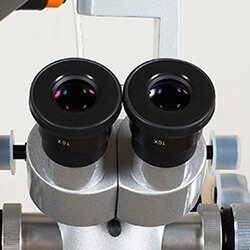Medical devices can range from mass produced stents to custom made parts like prostetics or other implants. In either event, these parts need not only fullfill their function but need to do so the first time.
In the study and development of medical equipment or any other products that interact with the human body e.g. airbags, prosthetics, heart valves or joint replacements, simulation can provide biomechanical engineers with invaluable feedback regarding expected performance and durability.
Engineers can also find answers to the following questions:
- How can we optimize the design within a reasonable timeframe?
- How can we improve product development while still maintaining safety and reliability?
During the design of this equipment adherence to standards is of utmost importance. Combining testing and simulation can help engineers pass safety requirements easier and with less prototypes, therefore reducing costs and improving the lives of the individuals whose lives depend on the quality and performance of these devices.








